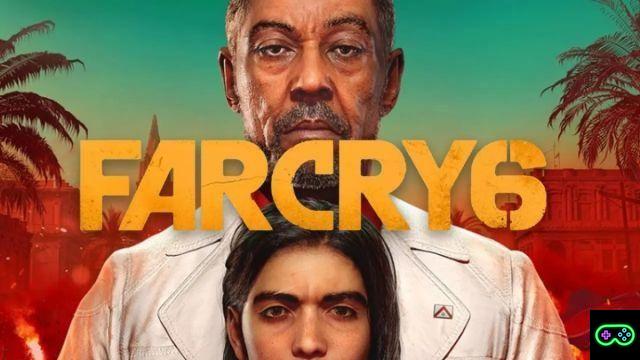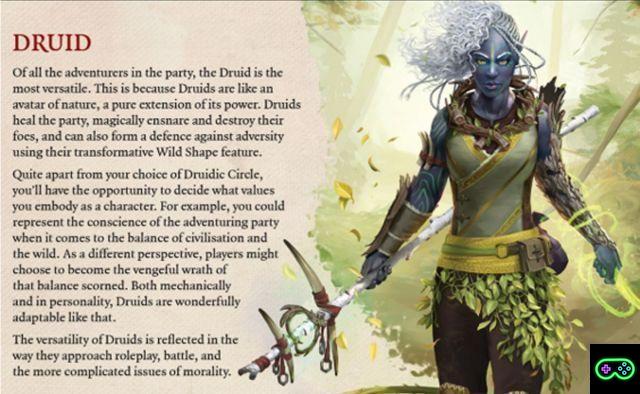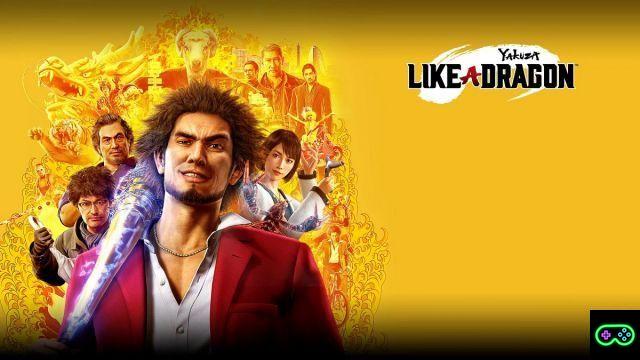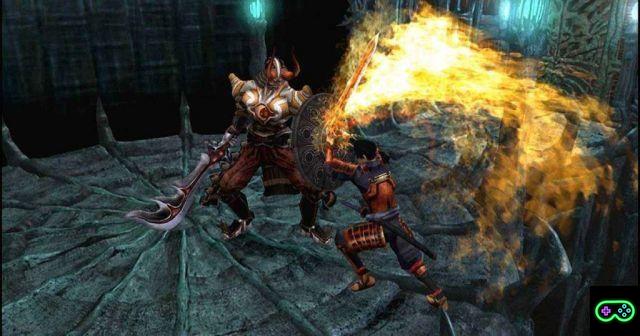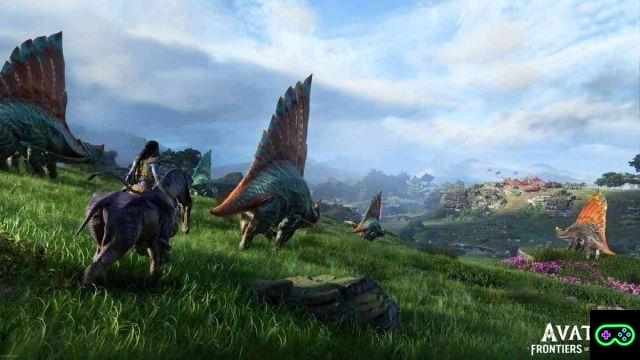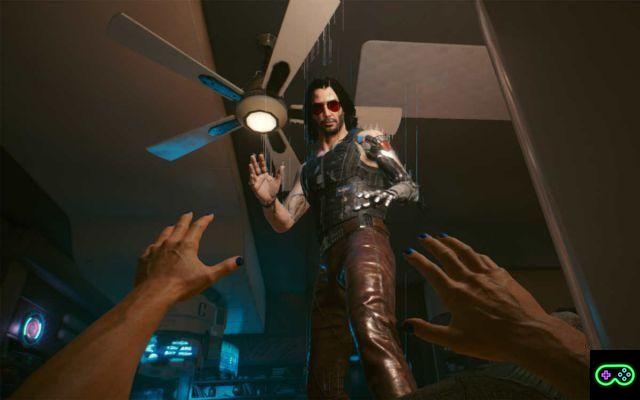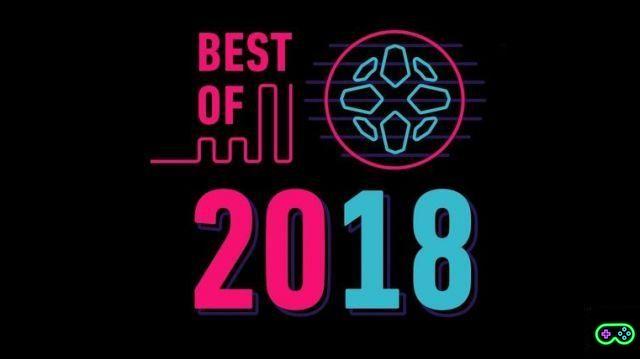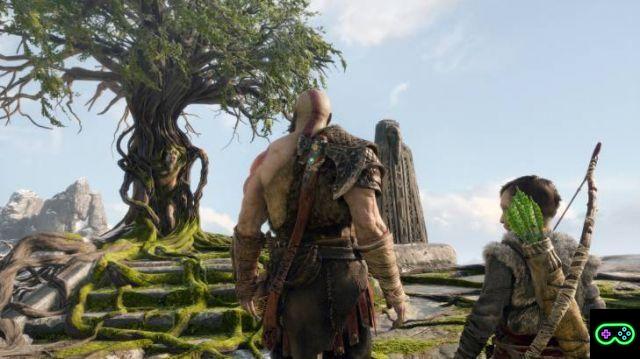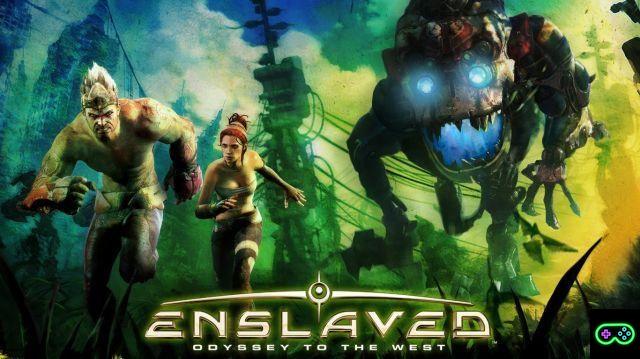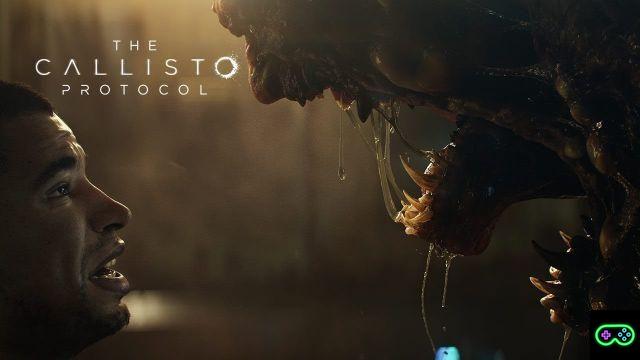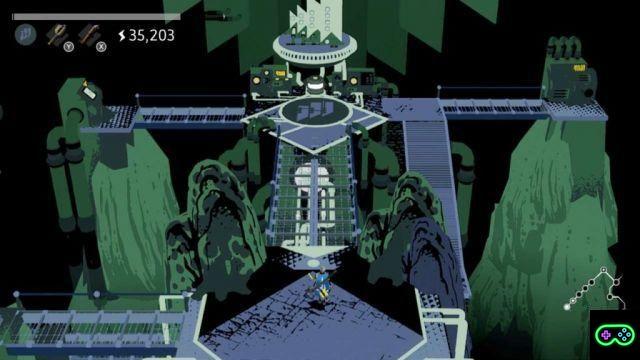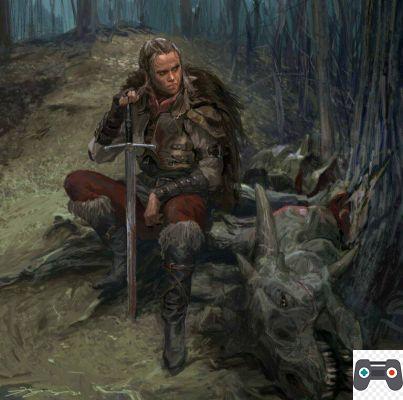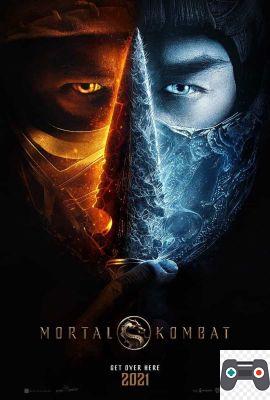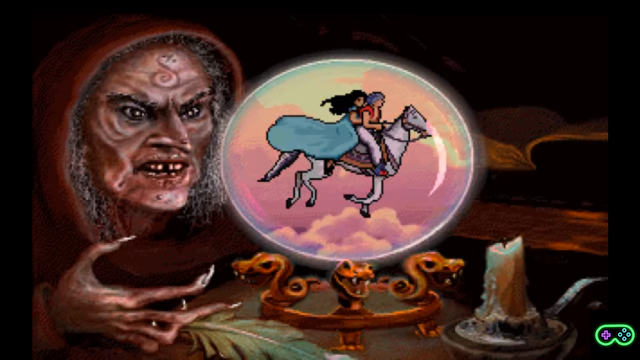After overcoming the intimate trauma resulting from having finished themythological analysis of the saga of God of War, this 38th appointment with the Bear's Lair it will move on to other topics, other countries and other genres: we will start talking about the vast influence exerted by mythology and from religion on the saga of Shin Megami Tensei, and in particular on 3 person.
Developed by Atlus and published in 2006 for PlayStation 2 and then for other stuff and various platforms, at least for Japan, since in Europe it was released in 2008, Shin Megami Tensei: Persona 3 it is a title that those who follow this column would never have expected to find here: it is a J-RPG, for an Role playing game in style giapponese, a genre that - usually (pun intended) - has never fascinated me. I know it, you readers know it, even the Japanese know it, and that's why they hate me. It is well known.
![[The Bear's Lair] The mythology in Shin Megami Tensei: Persona 3 - vol. 1](/images/posts/2c42c0a13660e0893448a1892e7c749c-0.jpg)
This 3 personHowever, it does not just draw heavily from the mare magnum of the mythologyand religion and Folklore: you dive like a bomb, shouting disconnected phrases in ancient Greek, in proto-Germanic, in Japanese from the heck-heck period and even in the Teramo dialect, for some reason. This sentence will make sense towards the end of the article, promised.
The mythology of Persona 3
Although it is also often cataloged as life simulator, this Persona 3 is chock full of J-RPG elements: from turn-based combat to the graphic style he remembers souls, passing through a markedly altered one sense of proportion for melee weapons, and for a setting that revolves around high school students.
![[The Bear's Lair] The mythology in Shin Megami Tensei: Persona 3 - vol. 1](/images/posts/2c42c0a13660e0893448a1892e7c749c-1.jpg) But the aspect that struck me the most, and that in summary pushed me to leave my usual one comfort zone to tell you about this title, it is the massive in-game presence of mythological and religious figures, belonging not only to Japanese mythical system and Eastern in a broad sense, but also to those of distant civilizations like that Greek, Celtic, Scandinavian, Jewish-Christian, etc., etc.
But the aspect that struck me the most, and that in summary pushed me to leave my usual one comfort zone to tell you about this title, it is the massive in-game presence of mythological and religious figures, belonging not only to Japanese mythical system and Eastern in a broad sense, but also to those of distant civilizations like that Greek, Celtic, Scandinavian, Jewish-Christian, etc., etc.
Tartar and Gekkoukan High School
In the first installment of the Persona series, consisting of the spin-off Megami Ibunroku Persona which maybe we'll talk about in the future, shows us the Tartar (Tartarus, Tartarus) come una parte della Thanatos Tower; you, dear readers, have been following this column for months now, and then you will have read both the analysis of God of War:Ascension is that of GoW: Chains of Olympus, and by now you will know better than I what the Tartar.
If you have also read the piece on GoW: Ghost of SpartaFurthermore, you will certainly remember what the identity and mission of Thanatos; if, on the other hand, you have not browsed any of the three linked articles, die badly, do not despair: we will do some local thinking.
![[The Bear's Lair] The mythology in Shin Megami Tensei: Persona 3 - vol. 1](/images/posts/2c42c0a13660e0893448a1892e7c749c-2.jpg)
Thanatos, on the one hand, he is the son of Nyx, that is the primordial Night which also generated the Moire who weave the fate of gods and mortals as well Charon (the ferryman of the Underworld), Hypnos (sleep, Death's younger brother) and most of the personifications of Greek mythology.
On the other hand, the Tartar it is, in short, the most remote, dark and deepest area of the infer; that's where i are locked up Titans survived the Titanomachy, that is, the generational clash against Olympus gods. It is also the name of the third be primal emerged from the Chaos, at least according to Hesiod, but so much.
![[The Bear's Lair] The mythology in Shin Megami Tensei: Persona 3 - vol. 1](/images/posts/2c42c0a13660e0893448a1892e7c749c-3.jpg)
Il Tartarus from Persona 3instead, it is a gigantic tower which, apparently, has the habit of appearing too close to the Higher Institute Gekkoukan, at the stroke of each Dark Hour: la Dark Hour that we will deepen in a moment.
![[The Bear's Lair] The mythology in Shin Megami Tensei: Persona 3 - vol. 1](/images/posts/2c42c0a13660e0893448a1892e7c749c-4.jpg)
A 'na sure this tower takes and emerges from the ground, with a chaotic structure and without a well-defined pattern, each time different from the previous appearance. So, de botto, meaningless.
The appearance of the Tartarus led to the formation of the Special Extracurricular Execution Team o IT IS: an after-school club which also includes our protagonist. Instead of devoting himself to the usual activities of Japanese high school students, whatever they are, the IT IS specializes incovert investigation and in the hunt for Umber. Maybe they don't have a driver's license and can't drink, but they eat demons for breakfast.
![[The Bear's Lair] The mythology in Shin Megami Tensei: Persona 3 - vol. 1](/images/posts/2c42c0a13660e0893448a1892e7c749c-5.jpg)
Dark Hour, Shadows and many mysterious mysteries
Retaining the slightly over-the-top style of the J-RPG, 3 person will put before us a flood of called opponents Umber: of the creatures that, in perfect mode Mind-Flayer, they feed on the mind of humans; their victims become empty shells, of plants affected by the so-called Apathy Syndrome. A bit like the Nightmares e the succubi of european mythbut without the fun part.
The story is much longer, but we can summarize it like this: the darkest thoughts, usually repressed in the dark recesses of our psyche, gangren and release into the world equally dark physical forms, that is the Umber, similar to the classics demons & kindreds of western fantasy.
![[The Bear's Lair] The mythology in Shin Megami Tensei: Persona 3 - vol. 1](/images/posts/2c42c0a13660e0893448a1892e7c749c-6.jpg)
These entities generally only appear during the Dark Hour, A kind of twenty-fifth hour secret: after midnight the world stops, the vast majority of humans lock themselves up in sarcophagi to protect themselves from the Shadows, and only a few special individuals they are able to act normally in that period of time. The others, upon awakening, have no memory of this additional hour, nor of what happens when the world is dominated by Umber.
It is precisely during this hour that the IT IS he sets out to explore the Tartaro Tower, to discover its secrets and perhaps put an end to the plague of Umber. The figure of the Shadow, it must be said, remembers not a little the Greek σκιά, that is the ghost of a deceased, a spectrum, a spirit residing in the Underworld.
![[The Bear's Lair] The mythology in Shin Megami Tensei: Persona 3 - vol. 1](/images/posts/2c42c0a13660e0893448a1892e7c749c-7.jpg)
And to stay on the subject, the concept according to which we potentially all risk becoming Umber, except for the Kings and Heroes properly speaking, it calls to mind the Greek Apotheosis: the deceased hero rises to the semi-divine status, usually in local key and chthony (underground), in the sense that the hero has not ascended to Olympus but is there, under the feet of his family and fellow citizens, who venerate him with rites closer to Persephone that Zeus.
The concept of person
The Kids The heroic SEES students face the Shadows with the help of one or more People: powerful physical manifestations of one's personality, that is, a middle ground between one Pirandello mask it's a patronus of the saga of Harry Potter, in conclusion.
Se a Shadow it is the malevolent manifestation of one's subconscious, free and unrestrained of any kind, one Person it is the more or less benevolent manifestation of the same subconscious, this time kept under control thanks to training and willpower.
These People spring from a kind of reservoir mythological archetypes, which in the game - it is speculated - also generated the notion of creatures, worlds and divinity of myth; a Person influences and is in turn influenced by its human user, to the point of being able to evolve into other People and to be able to give to the mortal in question even some supernatural abilities.
Those who have this power in themselves generally use a Summoner to summon your own Person: a kind of pistol, similar to the Ruger Mk. III, able to evoke the Person enclosed in the user's psyche. Some succeed without it evoker, in some cases with great fatigue and terrible pain, in others with a certain nonchalance.
![[The Bear's Lair] The mythology in Shin Megami Tensei: Persona 3 - vol. 1](/images/posts/2c42c0a13660e0893448a1892e7c749c-8.jpg)
In a nutshell the Evoker represents suicide: You point the gun to your head and pull the trigger, in a sense killing your own I conscious to bring out theI of the sub-conscious, Namely the true essence of our character. This is surprisingly appropriate for teenagers: it is precisely at that age that one comes to terms with one's own mortality, starting to accept it and to deal with it, obtaining a +2 to Wisdom in return. Memento died, in conclusion.
People of Persona 3
Probably the most confusing title on WelcomeGaming.com. Apart from that, since mythological and religious themes in 3 person there are many and, often, also quite tangled, in the end I decided to proceed by putting under the magnifying glass one character at a time.
We will not go on analyzing one mythological system after another, therefore, but we will collect in each step all the avatars, that is the People, which each character is able to summon. We start, of course, with him / her.
The protagonist of Persona 3
Just moved toGekkoukan Higher Institute, protagonist (or the protagonist) that we are going to impersonate has a strong ability to adapt to Dark Hour, and catapult us into the weight Greek mythology. Even in all the others mythologies and religions, but let's go in order.
![[The Bear's Lair] The mythology in Shin Megami Tensei: Persona 3 - vol. 1](/images/posts/2c42c0a13660e0893448a1892e7c749c-9.jpg)
During one of the attacks of the Shadows, in fact, he discovers that he can use a evoker with a certain ease, not being afraid of death, but Death must have taken it personally: in fact, at first the protagonist evokes the Person di Orpheus, but shortly afterwards the head of the latter explodes, and comes out Thanatos, Death himself.
![[The Bear's Lair] The mythology in Shin Megami Tensei: Persona 3 - vol. 1](/images/posts/2c42c0a13660e0893448a1892e7c749c-10.jpg) Violence ensues, the Shadows are shredded, and the protagonist ends up unconscious on the ground.
Violence ensues, the Shadows are shredded, and the protagonist ends up unconscious on the ground.
Ah regazzi ', and mò' too hole 'I'm Evoker!
The protagonist will come to be able to summon further 150 types of Person, which can also be exchanged in combat; but there is a reason he is OP (overly strong) by default: as we will discover throughout the story, he has a rather intimate connection with Thanatos, Death, and for good measure it has also been tucked into the plots of fate they might bring to the Apocalypse, so it fits.
![[The Bear's Lair] The mythology in Shin Megami Tensei: Persona 3 - vol. 1](/images/posts/2c42c0a13660e0893448a1892e7c749c-11.jpg)
Let's now see a very small selection of avatar evocabili from the protagonist: just three, a taste.
Orpheus: the orphan prophet, poet and musician
Just like our protagonist, the Orpheus which inspired his premiere Person is a child prodigy: the son of a Thracian R and the Musa Calliope, is taken under the protective wing of the god Apollo, which gives him a small golden lira; with this musical instrument he will learn to play, his mother will teach him to sing, and his musical ability will grow to allow him to enchant men, animals and gods alike.
In addition to being considered the god of music and poetry, Orpheus is also famous for being one of the Argonauts: with his lyre he managed to counterpell the bewitching song of the Sirens, thus saving the ship and its crew from a sad fate.
But his is also an ambiguous figure: he embodies anxiety, the doubt e lack of trust towards the gods, as explained in the legend of Orpheus and Eurydice which we have already discussed extensively in the past.
![[The Bear's Lair] The mythology in Shin Megami Tensei: Persona 3 - vol. 1](/images/posts/2c42c0a13660e0893448a1892e7c749c-12.jpg)
I summarize briefly: Eurydice kick the bucket, Orpheus confronted a trip to the Underworld out of love for her, he recovers it but at the last moment he is seized by anxiety and turns to look at it, breaking by fate the only condition set by Ade, And then Eurydice back in infer; Orpheus understandably he despairs, refuses to participate in a orgiastic rite because it's not in the mood, but the bacchantes s'inalberano e lo decapitano.
The story of Orpheus and Eurydice reminds me a little of the biblical one of Lot's wife that, on the run from Sodom with the whole family, at the last he turns to look at the city punished by God, in contravention of the order received shortly before by some Angels, and is transformed into a salt statue. I mean, trust the gods, or you could end up badly.
![[The Bear's Lair] The mythology in Shin Megami Tensei: Persona 3 - vol. 1](/images/posts/2c42c0a13660e0893448a1892e7c749c-13.jpg)
In 3 personIn fact, Orpheus belongs toArcane of the Fool, the madman: represents the human folly of disobeying, even if involuntarily, divine commands. The Orpheus moreover, the game has a completely mechanical body, which supports its only intact part: the head, just as the head of theorpheus of myth, who ended up singing in the waves of the Ebro, immortal as his art.
In Roman myth, at least, there is a happy ending per Orpheus: my fellow countryman Publio Ovidio Nasone it makes him reunite with his beloved Eurydice, for eternity.
Thanos Thanatos, la Morte personified
After his fleeting appearance in the prologue, we find that in reality Thanatos it is - quite predictably - the Person ultimate ofArcane of Death.
In fact, in the Greek myth Tanato / Thanatos is the personification of Death and mortality; her, however, is one peaceful and natural death, for an eternal sleep which is opposed to violent death. On the other hand, at least according to the Hesiod's Theogony, Death - as we have already mentioned - is the twin brother of Sleep, Hypnos, and their sister is Ker, violent death.
Child of the Night (Nyx) and of Darkness (Erebus), or just Nyx in some sources, Thanatos has been represented and described in extremely different ways: if it is sometimes associated with dying in peace, Homer for example he describes him as an arrogant, violent, ineluctable being and an enemy of both mortals and immortals. Basically Thanos.
![[The Bear's Lair] The mythology in Shin Megami Tensei: Persona 3 - vol. 1](/images/posts/2c42c0a13660e0893448a1892e7c749c-14.jpg) Il Thanatos of Aeschylusinstead, it allows us to build a risky connection with i Scandinavian myths: Sisyphus managed to get drunk Thanatos and chained him, effectively making death disappear from the world. Ares, the god of war, realized that there were no more dead in battle, and rushed to free Thanatos. It does not remind you of the figure of Fenrir, deceived and chained by the Aesir, intimately connected with the figure of Tire, the god of war, is destined to bring death and destruction to both mortals and immortals?
Il Thanatos of Aeschylusinstead, it allows us to build a risky connection with i Scandinavian myths: Sisyphus managed to get drunk Thanatos and chained him, effectively making death disappear from the world. Ares, the god of war, realized that there were no more dead in battle, and rushed to free Thanatos. It does not remind you of the figure of Fenrir, deceived and chained by the Aesir, intimately connected with the figure of Tire, the god of war, is destined to bring death and destruction to both mortals and immortals?
Be that as it may, in the passage from the Greek myth to that Roman our Thanatos gradually became more like a Cupid, until it takes the form ofDeath angel. Person 3 tries to be inspired byolder iconography, and depicts him in a more warlike and impulsive guise.
The Messiah, the final form
In the last level of the Tartar we unlock one Person which could be ... controversial.
As I have written and reiterated several times, religion is a private matter: here we are discussing mythology, sacred texts, religious figures and their influence in Games, In the RPGs and in TV series. Even when we discuss religions alive and well, such as the Christianity e Islam, you don't want to be disrespectful to anyone.
We said. There Person final ofArcane of Judgment and the Messia, quite literally. It is obtained from the merger of Orpheus and Thanatos, ie from Person original of Protagonist with that ofAntagonist of the game. I'm not going to spoil more details, otherwise I would completely spoil the surprise for you.
![[The Bear's Lair] The mythology in Shin Megami Tensei: Persona 3 - vol. 1](/images/posts/2c42c0a13660e0893448a1892e7c749c-15.jpg)
Suffice it to say that the messianic figure it is present in most religions: the Abrahamic ones of Judaism, of Islam and Christianityin particular, they offer the faithful first salvation of the Apocalypse, through an individual who plays the role of Savior.
The appearance of this Person, with that big structure on the shoulders, it could suggest a Savior in particular, but this is not the important thing: what matters is that the Messia, that is, the Anointed of the Lord, is the one sent by God, and who has the purpose of putting an end to the current reality and starting a perfect era, that is, a new one Golden Age where the boundaries between humanity and divinity are thinning.
Other deities that appear as Persons
Among the over 150 People that our protagonist can evoke, there are many famous names that we will go to deepen in the future.
![[The Bear's Lair] The mythology in Shin Megami Tensei: Persona 3 - vol. 1](/images/posts/2c42c0a13660e0893448a1892e7c749c-16.jpg)
Some quick examples, shown with the spelling you find in the game and not with the one that would be more correct. Get ready for an avalanche of mythological creatures and assorted deities:
- Odin: needs no introduction, I guess, the Father-of-all area of Scandinavian mythology;
- Loki: trickster for excellence, god of deceptions, of the ingenuity but also of the flame of civilization, as well as the one who will provoke the Ragnarǫk;
- Skadi: goddess skier of the mountains and hunting, as well as (ex-) wife of Njǫrðr;
- Thor: the fawn god of the storm, bearer of Mjollnir, protector of humanity and eternal adversary of the Jǫtnar giants;
- Nidhogr: a linnormr (snake-dragon) that gnaws at the roots of the cosmic ash Yggdrasill;
- Norn: the Norns Scandinavian, i.e. the Moire Greek and the Patch Roman, weavers of the fate of the living;
- Thoth: egyptian god of wisdom, of writing, of mathematics, sometimes identified with Greek Hermes;
- Saturn: roman god of regeneration, fertility and agriculture, payment of Titan Greco Crono, son of Uranus and father of Zeus;
- Juno: nothing else than Juno, wife of Jupiter, goddess of marriage and equivalent of the Greek Ivy.
- Hecatoncheir: one of the Hecatonchiri with a hundred arms, children of Uranus, including the Briareo di God of War: Ascension;
- Io: one of lovers of Zeus, who had to turn her into a cow due to jealousy of Ivy, as we have already discussed in the past;
- Cybele: the Great Mother of Anatolia, creator and destroyer, who later became Magna mater From Rome;
- Lilith: A female demon of the Mesopotamian religions, the bearer of disease and death, who in Judaism will become the rebellious first wife of Adam;
- Incubus: a succubus or a nightmare, which they depict allegorically nocturnal paralysis, similar to the pandafeche from Abruzzo;
- Vishnu: the Protector, one of the three gods of Trimurti, which together with Brahma the Creator and to Shiva the Destroyer forms the Supreme Being ofHinduism;
- Yomotsu-Shikome: a Japanese mythological figure, a kind of witch of the Underworld, involved in one of the events of Izanagi, the primordial sky of the Shintoism, and his wife - sister Izanami, mother earth; a story that, according to the historian of religions Puech, could be inspired by the Greek myth of Orpheus and Eurydice;
- Raphael: L'Archangel Raphael, specialized in healing (a healer, therefore!), and present both in the Bible and in the Koranic tradition;
- sandalphon: a Archangel of the Talmudic tradition, of Kabbalah and of Christianity, sometimes framed as twin brother by Metatron;
- Metatron: The heavenly scribe of Kabbalah and Judaism Rabbinism, which became an angel after the rise of the patriarch Enoch;
- Uriel: L 'Archangel Uriel, Light of God, is named in Book of Enoch, considered apocryphal by the Catholic, Orthodox and even Protestant Churches;
- Samael: L'Archangel Samuel, sometimes associated withDeath angel, specialized in seduction and punishment, and associated in some apocryphal texts with the figure of Satan;
- Abaddon: And the Abyss of the Hebrew Bible, a place of destruction, but it is also assimilated to theangel Apollyon in the Book of Revelation, as we have already seen;
- Chernobyl: dark god of Slavic paganism, as well as my favorite American Gods character;
- Legion: a demon spoken of in the New Testament, consisting of a multitude of demons and perhaps a metaphor for the Roman occupation forces; Legion is also present in the saga of Mass Effect, and is mentioned in Neverwinter Nights 2: Mask of the Betrayer in the character of One of Many.
"My name is Legion, because we are many." (Mark 5,9)
Just like Legion, the People available for our protagonist are many, very many, and derive from a large number of pantheons, mythological systems, legends and various folklore, so for the moment we stop here: we will continue theanalysis of mythology in Shin Megami Tensei: Persona 3 in the next article. As always, I look forward to seeing you next Wednesday, always here, in the Bear's Lair.

![[The Bear's Lair] The mythology in Shin Megami Tensei: Persona 3 - vol. 1](/images/logo.png)


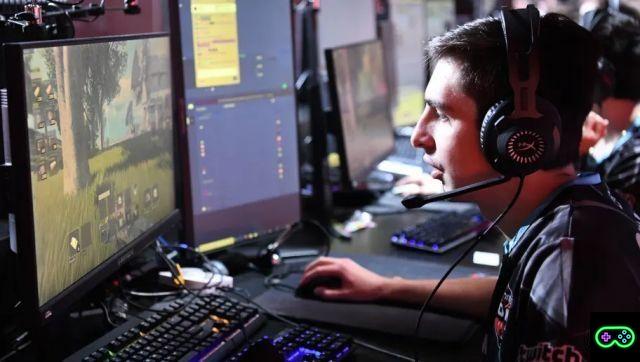
![[The Bear's Lair] God of War: Betrayal and Greek mythology](/images/posts/17432d3b12ecfec44b0b855d20c7520f-0.jpg)
